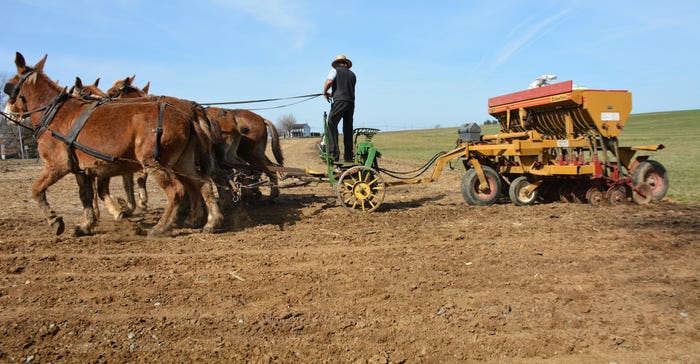
“It’s looking like we’re going to have a warmer-than-usual April,” says Jessica Spaccio, climatologist with the Northeast Regional Climate Center.
But it might be wetter than normal, too. The official April-to-June forecast from the National Oceanic and Atmospheric Administration, or NOAA, predicts a 40% to 50% chance of a wetter-than-normal spring across much of Pennsylvania and western New York; southern New Jersey, Maryland and Delaware; and most of Michigan and Ohio. In New York and most of New England, there is a 33% to 40% chance of wetter-than-normal conditions.
Spaccio says the prediction is based on the current La Nina we’re in — when sea surface temperatures are cooler than average in the equatorial Pacific for at least several months, altering tropical rainfall patterns and the global atmospheric circulation — as well as historical precipitation trends for the region.
Of course, predicting the weather isn’t an exact science, and it gets less accurate when you’re talking long-range predictions. Plus, this is April.
“We’re in a transition period; anything can happen,” Spaccio says.
One thing Spaccio is keeping an eye on is the drought situation in parts of New York and New England, especially Vermont, New Hampshire and Massachusetts, where the state has already declared a Level 1 mild drought for the western part of the state.
The U.S. Drought Monitor shows a wide area of the North Country as abnormally dry, and most of Vermont and southwest New Hampshire in a moderate drought.
New England and parts of northern New York saw widespread drought last year, and this past winter didn’t help much.
“We’re definitely watching that. Especially this time of year in spring, we typically think, OK, we got the winter recharge from the snowmelt and things like that,” Spaccio says. “We didn’t have a lot of snowfall this winter. In more northern areas, we had some warm temperatures, so that wasn’t helpful in the conditions. So some places are looking a little dry. It is optimistic to see that above-normal probability on the map. That could help pull us out, but it’s definitely not a given at this stage of the game. It’s too early.”
Northwest Ohio and southern Michigan also are experiencing moderate drought, while all of Michigan is abnormally dry on the U.S. Drought Monitor map.
Unlike other areas of the country, especially the West, where extreme and exceptional drought are widespread right now and can be long-lasting, Spaccio says you have to go back to 2002 when the region saw a widespread drought, from Maryland to Maine.
The past few years have seen hot and dry conditions in the early part of summer with timely “million-dollar rains” by August that usually save the growing season. Spaccio says that short-term summer droughts are becoming more common — perhaps because of climate change — as summertime temperatures get hotter and there is more evaporation.
About the Author(s)
You May Also Like






